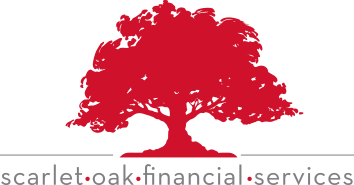Introduction
When structuring a buy-sell agreement funded by life insurance, many business owners and advisors focus on ensuring the agreement is properly funded and legally sound—but fewer consider the potential tax consequences that can arise, particularly with C corporations. One often-overlooked tax consideration is the Alternative Minimum Tax (AMT). Designed to ensure that high-earning entities pay a minimum level of tax, the AMT can unexpectedly affect C corporations when life insurance proceeds or policy cash value increases come into play. This article explores how AMT applies to insurance-funded buy-sell agreements, its potential impact on your business, and the planning strategies that can help mitigate exposure.
What is the alternative minimum tax (AMT)?
The alternative minimum tax (AMT) is a complicated tax calculation designed to eliminate the potential for taxpayers to report large financial accounting profits while reporting little taxable income, thus paying little or no tax. The AMT is essentially a separate system of taxation with its own rules and tax-computation methods. It requires the taxpayer to perform a set of calculations that result in reclaiming some of the tax breaks available to high-income taxpayers. The AMT amount is compared to the tax liability computed under the regular income tax calculation. If the AMT amount is higher than the tax calculated under the regular income tax rules, then the AMT becomes the tax amount due.
Who is affected by the AMT?
The corporate AMT applies to C corporations. The individual AMT applies to S corporations and noncorporate taxpayers. Small corporations are exempt from the corporate AMT. A corporation qualifies as a small corporation if the current tax year is the corporation’s first year of operation (regardless of income), or if both of the following conditions apply:
- The corporation was treated as a small corporation exempt from the AMT for all prior tax years beginning after 1997
- The corporation’s average annual gross receipts for the three-year period (or portion thereof during which the corporation was in existence) prior to the current tax year did not exceed $7.5 million ($5 million for the corporation’s first three-year period)
How does the AMT affect the life insurance funding your buy-sell agreement?
Proceeds payable to C corporation could trigger AMT
As a general rule, proceeds from a life insurance policy are exempt from income tax. However, when proceeds are paid to a C corporation, exposure to the AMT is increased to the extent that the death benefit exceeds the corporation’s basis in the policy.
Policy cash value buildup could trigger AMT
Generally, the internal buildup of the cash value within a life insurance policy is not taxable unless the taxpayer surrenders (cancels) the policy. An exception to this occurs with insurance policies owned by a C corporation. When the policies owned by the corporation build cash values, exposure to the AMT is increased by the extent to which the policy cash value increase exceeds the premium paid in a given year. The increase in the policy cash value for any given year must be included in the adjusted current earnings calculation (ACE), which is part of the overall AMT calculation.
Is there any way to avoid the AMT?
There are some alternatives available for the corporation to use to avoid the increased exposure to the AMT resulting from corporate-owned life insurance, some of which are more complicated than others. The C corporation could:
Use cross purchase buy-sell agreement instead of entity purchase agreement
The shareholders could obligate themselves under a cross purchase (buy-sell) agreement to purchase each other’s stock instead of involving the corporation. The cross purchase agreement form of buy-sell could be a practical choice when the corporation has only two or three shareholders, but it becomes more complex with a larger number of shareholders due to the number of insurance policies required. In addition, there could be complications in changing an existing entity purchase (stock redemption) agreement funded by corporate-owned life insurance to a cross purchase agreement due to the transfer-for-value rules. If a change from an entity purchase agreement to a cross purchase agreement is desired, the existing policies should be cashed in and new policies obtained, thus avoiding the transfer-for-value problem. This could be difficult to do if any of the shareholders have become uninsurable.
Increase the amounts of insurance
The corporation could buy enough additional insurance on each shareholder to cover the effect of the AMT. The amount of insurance needed to still have enough money after the AMT can be calculated in advance. An increase in insurance would ensure that the after-tax amount of the proceeds is sufficient to completely fund the buyout, but this could be difficult if any of the shareholders are uninsurable.
Amend existing agreement
The existing entity purchase agreement could be amended with a stipulation that any shortage in the existing net death benefit proceeds must be paid in installments over a specified period.
Elect to become an S corporation
The corporate AMT does not apply to S corporations. While changing the form of entity is an option, it may not be the best choice due to all the tax and legal implications of changing the corporate structure.
Conclusion
Life insurance can be a powerful tool in funding a buy-sell agreement, but when owned by a C corporation, it introduces potential AMT exposure that shouldn’t be ignored. From increased tax liability on death benefits to cash value growth triggering additional tax calculations, business owners must plan carefully to avoid unexpected consequences. Options like cross purchase agreements, increasing insurance coverage, or even converting to an S corporation can help reduce or eliminate AMT impact—but each approach comes with its own complexities. Working with knowledgeable financial, tax, and legal professionals is essential to evaluate your options and structure an agreement that aligns with both your business goals and tax planning strategy.
Scarlet Oak Financial Services can be reached at 800.871.1219 or contact us here. Click here to sign up for our weekly newsletter with the latest economic news.
Source:
Broadridge Investor Communication Solutions, Inc. prepared this material for use by Scarlet Oak Financial Services.
Broadridge Investor Communication Solutions, Inc. does not provide investment, tax, legal, or retirement advice or recommendations. The information presented here is not specific to any individual’s personal circumstances. To the extent that this material concerns tax matters, it is not intended or written to be used, and cannot be used, by a taxpayer for the purpose of avoiding penalties that may be imposed by law. Each taxpayer should seek independent advice from a tax professional based on individual circumstances. Scarlet Oak Financial Services provide these materials for general information and educational purposes based upon publicly available information from sources believed to be reliable — we cannot assure the accuracy or completeness of these materials. The information in these materials may change at any time and without notice.



